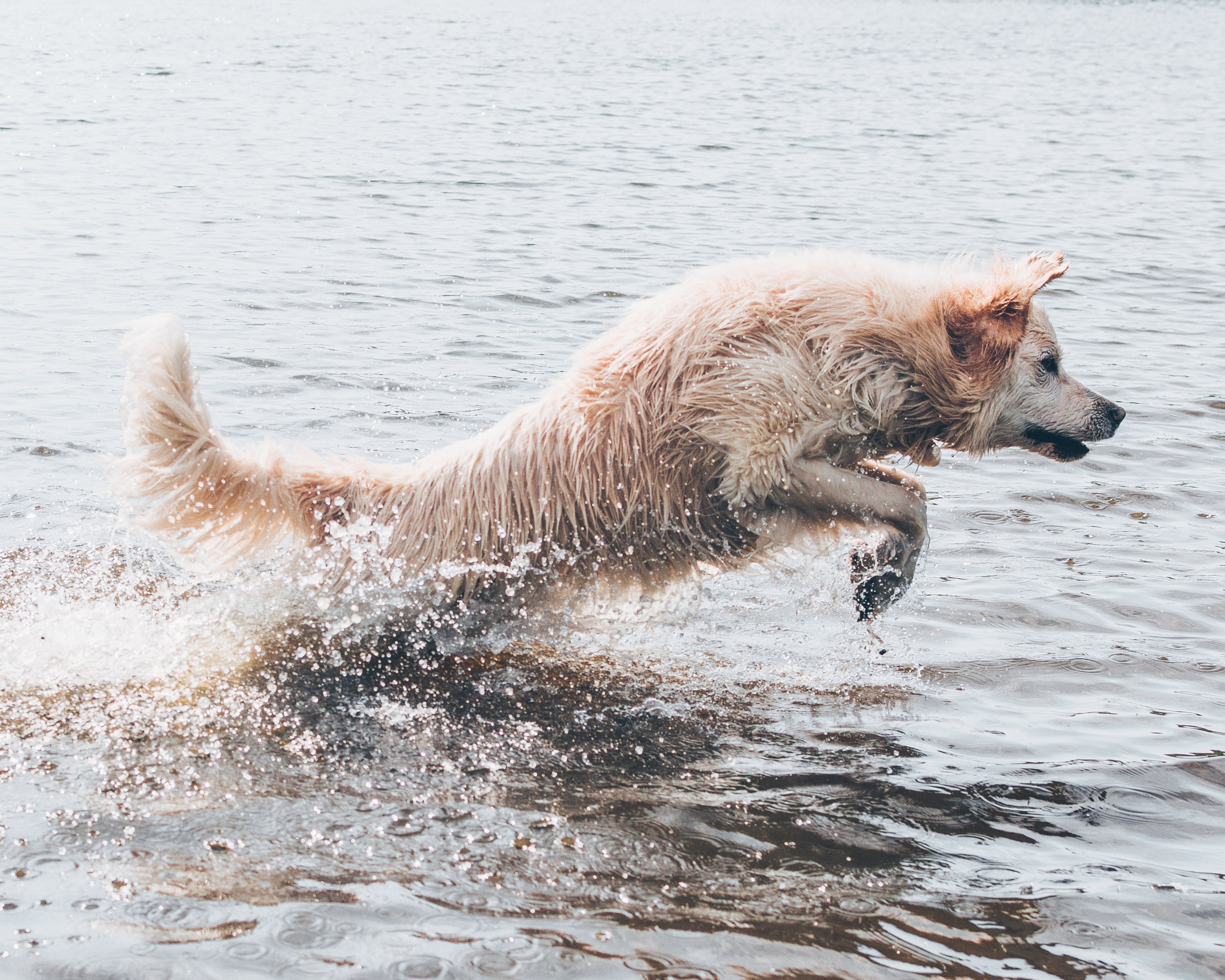When it comes to our furry best friends, exercise is a crucial part of their health and happiness. Understanding the right level of physical activity for your pooch is a vital part of responsible pet ownership. But how much is ‘enough’ when it comes to doggy workouts, and how do you ensure you're not under or overdoing it with your exercises?
In this extensive guide, we’ll delve into the daily exercise needs of dogs, taking into account various factors such as breed, age, size, and even health condition. Whether you have an energetic Lab ready to go at a moment's notice or a laid-back Basset Hound who's more comfortable on the couch, we’ll provide you with the insights to craft a tail-wagging fitness plan for your four-legged companion.
Understanding Your Dog's Exercise Needs
Just like humans, dogs have individual exercise needs influenced by several factors. Let’s dig into the major ones:
Breed
The breed of your dog plays a significant role in determining their activity levels. While some breeds are well-known for their high energy, others are content with a less strenuous lifestyle. Working breeds such as Border Collies and German Shepherds demand plenty of exercise to remain healthy and happy. On the other hand, brachycephalic breeds, like pugs or bulldogs, should take a more moderate approach due to their respiratory issues.
Age
Puppies and young dogs need more exercise than their adult or senior counterparts. Exuberant playtime and frequent walks are a must to help them burn off their seemingly boundless energy, as well as to support their growth and development. Conversely, a senior dog might need to take it easy due to potential joint issues and decreased stamina.

Size
The size of a dog also affects their exercise requirements. Larger breeds tend to have more robust frames and can handle longer walks and more vigorous activities. Smaller dogs, with their quicker metabolisms and more energy per pound, might need activities multiple times a day but at shorter intervals.
Health Condition
if you have any concerns about the health of your pup, it is essential to consult your veterinarian before engaging your per in any exercise. If your dog has any health issues, such as heart problems or arthritis, a veterinarian can provide you with clear guidelines on the types and amounts of exercise that are safe and beneficial for your dog.
Benefits of Regular Exercise for Dogs
Regular physical activity offers a multitude of benefits for your canine:
Physical Health Benefits
Exercise is an excellent way to maintain a healthy weight, build muscle, and provide cardiovascular challenges that keep the heart strong.
Weight Management
Like humans, overweight dogs are at risk for a range of health issues, including diabetes, joint problems, and reduced lifespan. Regular exercise, paired with a balanced diet, helps to manage a healthy weight.
Cardiovascular Health
A healthy heart keeps your dog active and full of life. Cardio workouts like running or swimming keep the heart pumping efficiently.
Muscle Tone and Strength
Strong muscles protect against injuries and so exercise helps in developing and maintaining muscle mass, especially for working breeds.
Mental Health Benefits
Stimulating your dog’s brain is just as important as exercising their body. Mental activities such as learning tricks or solving puzzles can tire them out just as effectively as a physical workout.
Stress Reduction
Physical activity is a natural stress reliever for dogs, particularly those prone to anxiety. A tired dog is a calm dog.
Mental Stimulation
Canine boredom can lead to destructive behavior or excessive barking. Regular walks and playtime keep their minds engaged and prevent boredom.
Behavior Improvement
A well-exercised, and thus tired dog often equates to a well-behaved dog. When dogs have ample opportunity to expend their energy through physical activity and mental stimulation, they are less likely to indulge in problematic behaviors. Regular exercise routines can directly lead to improvements in various aspects of a dog's behavior:
Reduced Hyperactivity
Regular exercise can significantly mitigate hyperactivity in dogs. Too much pent-up energy can lead to restlessness, excessive barking, and destructive habits like chewing on furniture. A tired dog, having burnt off their energy, is less likely to exhibit such behaviors.
Improved Sleep Patterns
Consistent exercise can help regulate a dog's sleep patterns. A well-exercised dog will sleep more soundly and at more consistent times, reducing night-time restlessness and potential disruptive behavior.
Enhanced Trainability
A tired dog is often more trainable, as they are likely to be more focused and less distracted. Regular exercise can help in making training sessions more productive and effective.
In essence, a tired dog is a happy dog, and a happy dog is typically a well-behaved one. Hence, incorporating regular exercise and mental stimulation can greatly benefit your dog's overall behavior.
Guidelines for Daily Dog Exercise
So, how much exercise is enough for your dog? Here are some general rules to get you started:
General Recommendations Based on Breed Size and Age
Every dog is unique, but as a rough guideline, small to medium-sized dogs may be happy with around 30 minutes to an hour of exercise each day, while larger breeds could require 1-2 hours. Puppies, however, will need this divided into several shorter sessions. Older dogs can benefit from shorter, more frequent walks to avoid overexertion.
Types of Exercises for Dogs
Diversify your dog's fitness plan with different types of exercise:
Walking
It's fair to assume that most dogs love daily walks, and it also happens to be easiest and most effective way to get your dog exercise. Taking your overweight pets on a walk is a perfect way to fulfill their instinctual need to travel and explore their environment. The pace and duration of these walks should match your dog's needs and physical abilities.
Running
If you have an active dog, running can be a great way to satisfy the exercise requirements for many dogs. Be mindful that not all dogs are built for endurance, especially depending on age and breed.

Playtime and Interactive Toys
Playtime with interactive toys like balls or frisbees not only provides physical activity but also the mental challenge of retrieving and catching.

Swimming
An incredible full-body workout that is gentle on the joints, swimming is a great dog exercise that is especially beneficial for dogs with arthritis or those recovering from injuries. It also helps keep your pooch cool in warmer weather.

Agility Training
Agility courses are not only a great way to provide a physical workout but also a fantastic mental challenge. They're particularly beneficial for intelligent and highly energetic breeds.
Signs of Under or Over Exercise
It’s important to monitor your dog's behavior and energy levels, as they often communicate if they’re not getting the right amount of exercise.
Indications That Your Dog May Need More Exercise
Agitation, restlessness, or destructive tendencies can indicate that your dog needs more physical or mental stimulation. These signs might also be accompanied by weight gain.
Monitoring Their Behavior and Energy Levels
Lethargy, excess panting, and reluctance to participate in activities they typically enjoy might point to over-exhaustion. In such cases, scaling back on exercise is essential to prevent fatigue or injury.
Adapting Exercise Routine
As your dog's life stages change, so should their exercise routines:
Adjusting Exercise Intensity and Duration as Your Dog Ages
Young pups will need more frequent, shorter exercises to accommodate their growing bodies, while senior dogs will benefit from reduced intensity and duration to avoid putting stress on their aging joints.
Special Considerations for Puppies and Senior Dogs
Puppies will want to play more and have bursts of high energy, whereas senior dogs might be content with several leisurely strolls a day. Tailor activities to their age and any medical conditions they might have.
Safety Tips for Exercise
Ensuring your dog exercises safely is as crucial as the exercise itself.
Proper Warm-Up and Cool-Down
Always start with a warm-up before vigorous exercise. Light activities like walking prepare your dog’s muscles and avoid injuries. Similarly, ending with a calm cool-down is vital for muscle recovery.
Avoiding Extreme Weather Conditions
Extremes of weather can not only be uncomfortable but dangerous for your dog. Protect their paws in extreme cold or hot conditions and make sure there’s always access to water, especially in the heat.
Leash and Off-Leash Considerations
Choosing between a leash and off-leash exercise depends on your environment and dog's recall abilities. Although the local dog park might seem like a great place to take your pup to burn off some energy, there are many safer alternatives. Leash laws are in place for safety reasons—yours and other dogs—so ensure your dog is trained in obedience and is comfortable with the commands before letting them off-leash.
Hydration and Rest Breaks
Water breaks are essential, especially during longer and more strenuous exercises. Ensure your dog has enough rest to catch their breath and avoid pushing them too hard.
Controlling Water and Food Intake Post-Exercise
After engaging in strenuous exercise, it's crucial to limit your dog's water and food intake. Dogs will naturally be thirsty and hungry after a good workout; nevertheless, moderation is key. Overconsumption of water can lead to a condition known as water intoxication or hyponatremia. This condition happens when excessive water intake dilutes the sodium in the body, causing cells to swell, which can lead to severe health issues, including potentially fatal brain damage. Similarly, eating large quantities of food immediately after exercise can put dogs at risk of bloat, a life-threatening condition where the stomach expands and can twist, obstructing blood flow. Instead, offer small amounts of water and food at a time and allow your pet to rest and recover before their next meal.
Conclusion
Understanding and meeting your dog's exercise needs is fundamental to their physical and mental wellbeing. By following the guidelines laid out in this comprehensive post, you can provide a regimen that keeps your canine buddy in top shape for years to come. Regular exercise doesn't just maintain their health; it also deepens the bond between you and your furry friend. So, lace up your walking shoes, throw the ball a few extra times, and watch as your dog's zest for life grows stronger with each workout.







